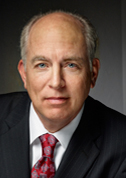© 2017 The Texas Lawbook.
By Tom Melsheimer of Winston & Strawn
(April 24) – It has become an almost seasonal occurrence for publications that cover the legal industry to feature an article about law firm rates, which generally use the handful of lawyers that charge $1,000 an hour or more as the “lede.”
For most law firms, these articles provoke what 1950s civil defense advocates called “duck and cover.” In other words, the articles are radioactive. Typically peppered with quotes from clients despairing the increasing costs of legal services, it’s no wonder that law firms don’t tweet links to these articles or post them on their websites.

There is no debate that many law firms have been slow to adopt business practices that align with their clients’ needs to have predictable and manageable costs, including the cost of legal services.
So called “alternative fee arrangements” based on something other than the strict billable hour have been around for decades and have accelerated in popularity since the financial crisis of 2008–2009. Even when cases are billed by the hour, clients rightly demand budgets that are realistic and based on something other than mere hope.
I don’t resist this kind of approach to case management; rather, I view it as part of my job in overseeing any case, regardless of the fee arrangement.
It’s hard to argue with an approach that brings more efficiency to the provision of legal services. Yet it strikes me that the focus on the rate of the senior trial lawyer misses the mark when the stated goal is increased efficiency and, ultimately, a successful result.
The idea that inherent in an hourly rate at or north of $1,000 per hour is a unique skill born of decades of experience is hardly a new concept, even if the rate itself is eye-popping. What is new, is the relative scarcity of lawyers with the kind of skills to justify that kind of rate, especially in a trial practice.
When I began practicing law in the late 1980s, the roster of legendary trial lawyers in Dallas alone was quite large—Jack Hauer, Jim Coleman, and Morris Harrell, to name a few. Statewide, that group encompassed dozens of lawyers on both sides of the bar. They were the “thousand-dollar-an-hour” club of the day. A client was lucky to get a lawyer like them on their team.
What has happened since then is a combination of inflation of hourly rates, but a deflation of experience. It is unusual today to find a trial lawyer under age 50 who has tried even a dozen serious cases before a jury.
There is no better proof of this than the admission practices of honorary trial lawyer societies. These organizations have had to lower, sometimes by as much as 50%, the experienced-based credentials for admission, or face extinction.
I saw this trend emerging even in the late 1980s, which is why I took what was then an unusual detour in a law career in Texas, and went to the United States Attorney’s Office to serve as a federal prosecutor. I had the opportunity to try many cases, and work my own appeals, in an era where law firms were dividing lawyers into specialists.
When I returned to private practice in the early 1990s, I found myself almost always the most experienced trial lawyer my age in the room. During the last 25 years that experience has taken me into the most complex of substantive legal disputes—antitrust, patent, and securities fraud—not because I was an economist, a technologist, or a financial expert—but because I had experience trying cases that most of my peers lacked.
Texas, generally, and Dallas, in particular, has its share of very talented advocates. But the numbers are far fewer than when I started practicing and the level of experience of an “experienced” trial lawyer is far lower than in years past.
Clients should be insistent on making sure the senior lawyer they have hired to try their important case, if it comes to that, has the kind of significant and substantial experience that justifies a top-end rate. Many trial lawyers today don’t. Their rate is akin to the ambitious private college seeking to enhance the perception of prestige by raising its tuition.
In a world where entry-level investment bankers make more than experienced schoolteachers, it’s hard to say we have done a particularly good job as a society of evaluating the worth of an individual’s contribution.
That’s a much more profound and controversial topic than hourly rates for lawyers. So let me end with this assertion to which I hope lawyers and clients alike can agree: a lawyer’s rate should embody that lawyer’s skill and experience. Seen in that light, the headline grabbing articles about the top end rates might fairly be rephrased as: you get what you pay for.
Thomas M. Melsheimer is Winston & Strawn’s Dallas Managing Partner. In his career, he has been recognized as the Trial Lawyer of the Year by the Texas Chapters of the American Board of Trial Advocates and the Dallas Bar Association.
© 2017 The Texas Lawbook. Content of The Texas Lawbook is controlled and protected by specific licensing agreements with our subscribers and under federal copyright laws. Any distribution of this content without the consent of The Texas Lawbook is prohibited.
If you see any inaccuracy in any article in The Texas Lawbook, please contact us. Our goal is content that is 100% true and accurate. Thank you.
